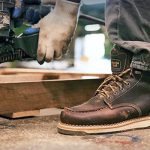According to new research from Craft, the performance sportswear company, specialty bike shops are riding close with online retailers when it comes to competition, thanks in large part to their knowledgeable sales staff. The research survey was conducted in partnership with Brookmark Research Services.
The company surveyed cyclists to find out which factors influenced them most when purchasing cycling clothing and accessories. For clothing, respondents were nearly tied in their preferred purchase channel (37 percent online versus 34 percent local bike shop). For accessories, however, local bike shops beat online by more than two to one (60 percent versus 25 percent).
The primary reasons customers shopped at specialty bike shops were for the customer service, cycling knowledge of staff, convenience and product knowledge. Meanwhile, price, selection and convenience ranked as the top reasons customers shopped online.
“The days of hiring minimum wage sales staff without experience in the sport or a comprehensive understanding of the products have come to an end. Sales staff must now be considered product experts,” said Alex Brooks, managing partner of Brookmark Research, who fielded the study. “Brick and mortar retailers can do more than survive, they can thrive, if they can provide superior product knowledge and support.”
Product knowledge is essential, considering cyclists place a premium on performance features. When purchasing clothing and apparel, cyclists were most likely to say they looked for features (65 percent), technical aspects (65 percent), and fit (63 percent) over other factors such as price (28 percent) and brand (9 percent).
According to Huub Valkenburg, CEO of Craft Sportswear North America, the emphasis on fit gives local bike shops an edge. “Fit is personal and subjective depending on what type of riding cyclists do. Buying clothes in the store allows people to feel confident about their purchase,” he said.
Notably, cyclists who try gear in a store are likely to purchase from that store. Only 9 percent of respondents said they typically buy gear online after first testing the product in a brick-and-mortar location. That said, most local bike shops aren't offering cyclists a wide variety of products to consider. Cyclists ranked local bike shops the lowest in terms of product selection, falling well behind online.
“People are coming to the store for product knowledge. You need to have the product on hand so you can talk to customers about it,” said Brooks. “Start by expanding the product lines your sales staff are the most knowledgeable about and grow from there.”
Valkenburg added, “Price will always be a factor, but if local bike shops can improve staff knowledge with the help of education from their manufacturer partners and expand product selection, the cycling community will reward those retailers with in-store purchases. This is a sporting community that values education and customer support.”
Respondents spent an average of $460 on clothing, helmet and shoes last year, and another $270 on accessories and other gear. Roughly 4 in 10 (37 percent-42 percent) purchased apparel items like shorts and bibs, jerseys, and vests/jackets more than once a year.
The research survey was completed by 1,119 qualified cyclists. Most respondents (58 percent) reported cycling at least 2,000 miles a year. The survery is available at: http://craftsports.us/industryreport/.














